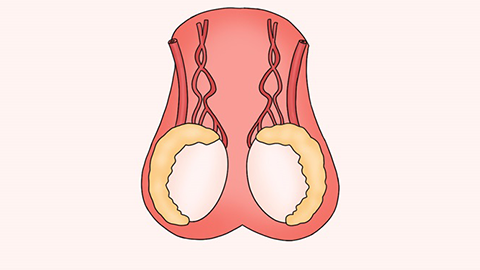What should be done for a child with undescended testes?
Generally, cryptorchidism in children may be caused by delayed testicular descent, anatomical abnormalities, endocrine disorders, testicular dysplasia, or inguinal canal stenosis or atresia. It is recommended to seek timely medical evaluation to determine the underlying cause and, under a doctor's guidance, improve the condition through general management, medication, surgery, or other treatments. The specific causes are analyzed as follows:

1. Delayed testicular descent: During fetal development, the process of testicular descent is incomplete and the testes have not descended into the scrotum within a short period after birth. This is commonly seen in premature infants. Parents should regularly monitor their child’s scrotal condition. If the testes have not descended by six months of age, prompt medical evaluation is necessary. Avoid applying pressure to the lower abdomen and minimize stimulation to the testes in daily care.
2. Anatomical abnormalities: Abnormalities or absence of the gubernaculum (testicular ligament) prevent proper traction of the testes into the scrotum, resulting in cryptorchidism. This condition usually requires surgical intervention. Orchiopexy can be performed to surgically reposition and fix the testis within the scrotum, restoring normal anatomical placement and promoting testicular development.
3. Endocrine disorders: Insufficient secretion of gonadotropins during maternal pregnancy or deficiency of gonadotropins in the child may impair the hormonal drive needed for testicular descent. Under medical supervision, medications such as human chorionic gonadotropin injection, luteinizing hormone-releasing hormone injection, or testosterone injection may be used to supplement hormones and promote testicular descent.
4. Testicular dysplasia: The testis itself has developmental defects, presenting as smaller size and reduced function, making normal descent difficult. In addition to evaluating whether hormonal therapy is appropriate, if drug treatment proves ineffective, early laparoscopic orchidopexy should be performed to determine the location and developmental status of the testis. Surgical interventions such as orchiopexy or other targeted procedures may be required when necessary.
5. Inguinal canal stenosis or atresia: A narrow or completely closed inguinal canal obstructs the passage of the testis into the scrotum. Surgical treatment is required, such as inguinal canal plasty, to widen or open the canal and create conditions for testicular descent. Postoperative wound care is essential to prevent infection.
In daily life, maintain cleanliness of the child’s scrotal area, avoid tight-fitting pants, and reduce pressure on the perineal region. Regular health check-ups are important to monitor testicular development.








